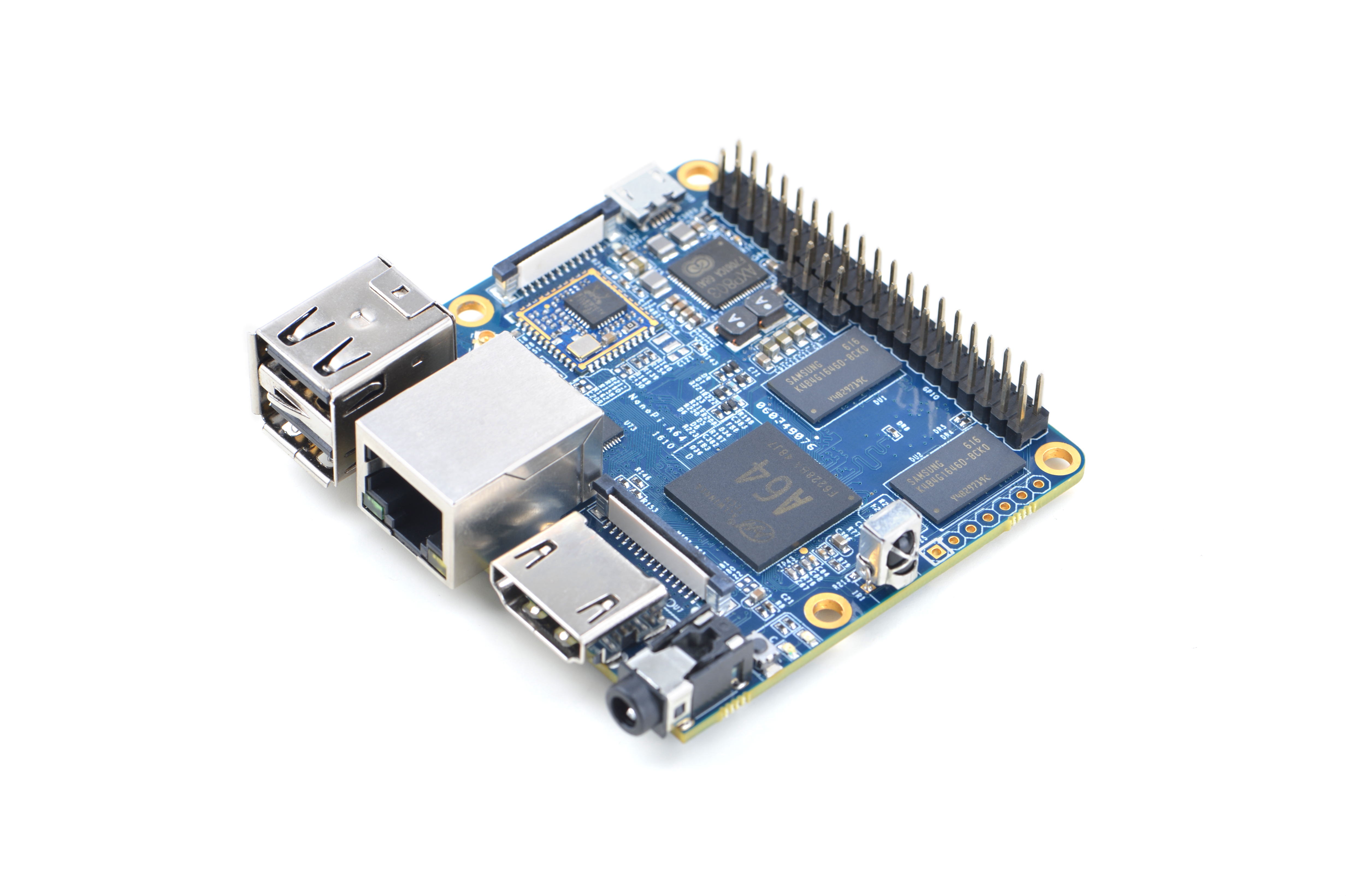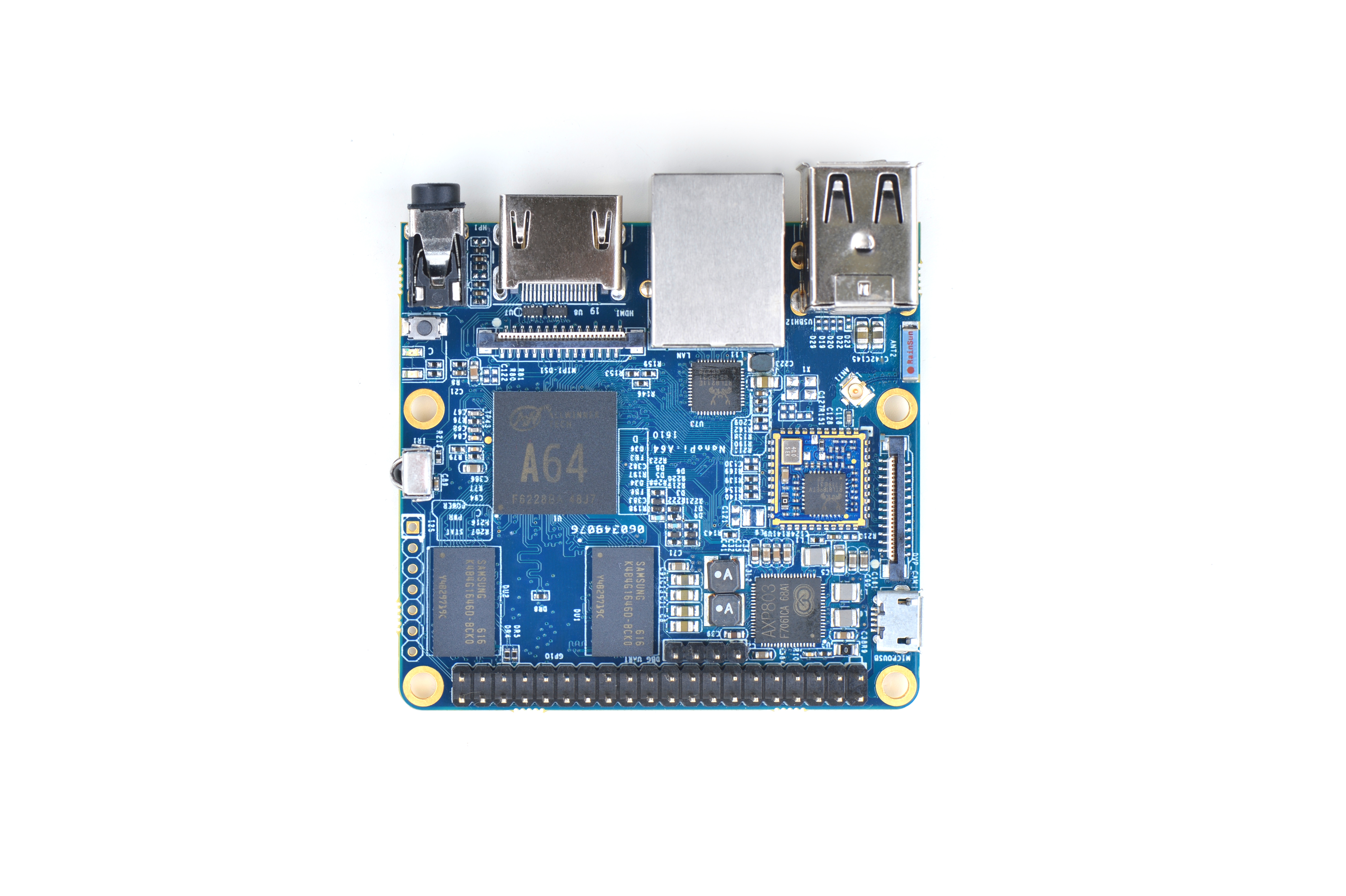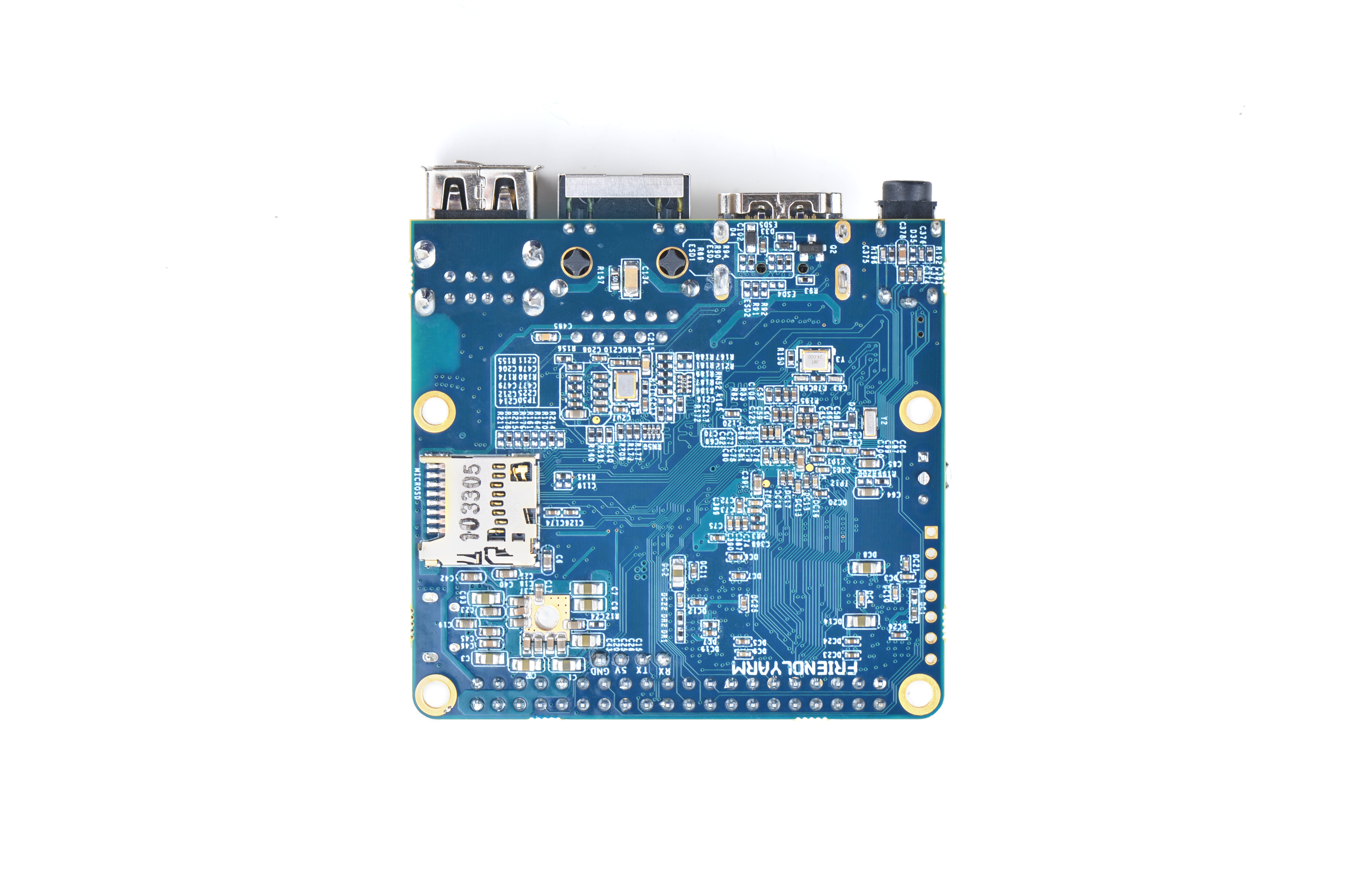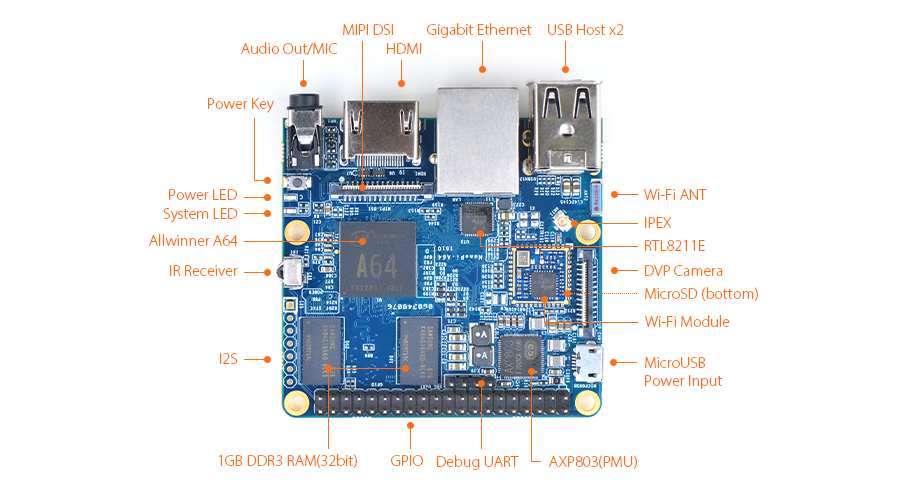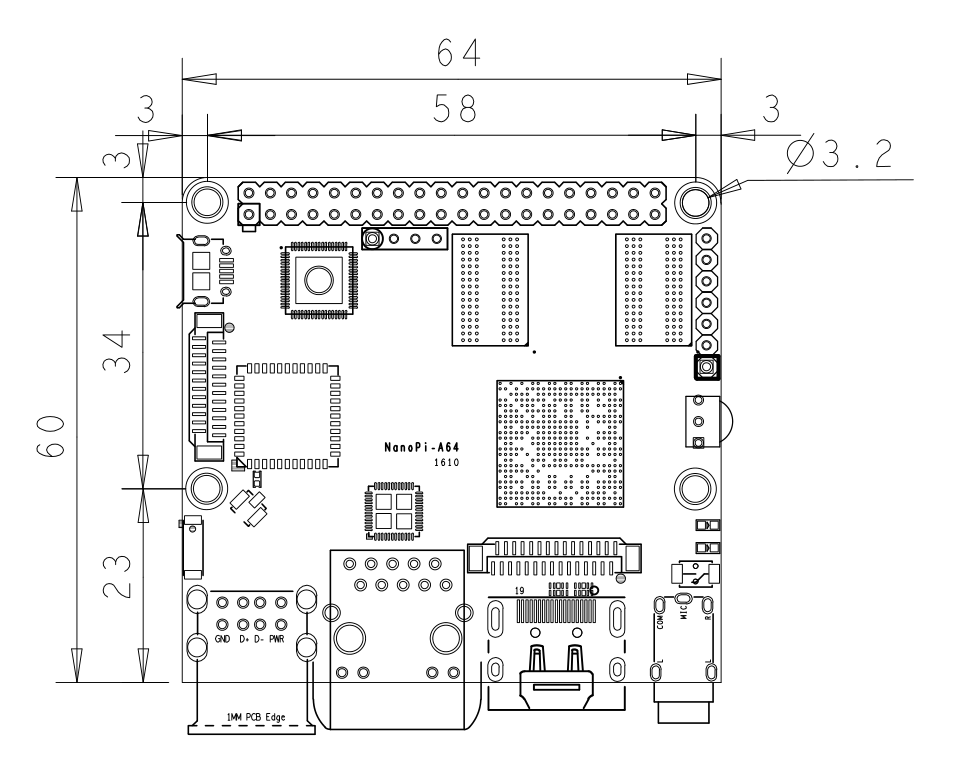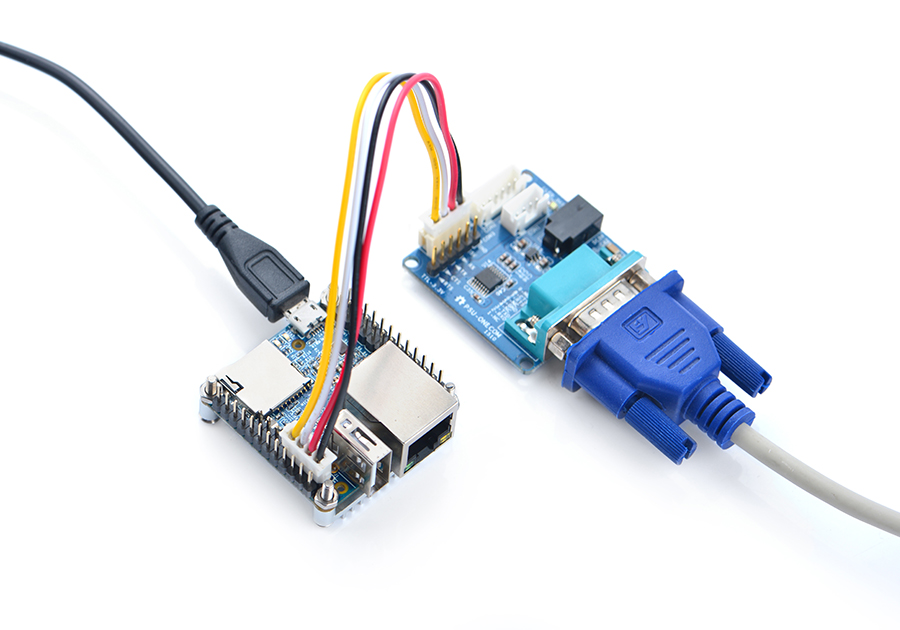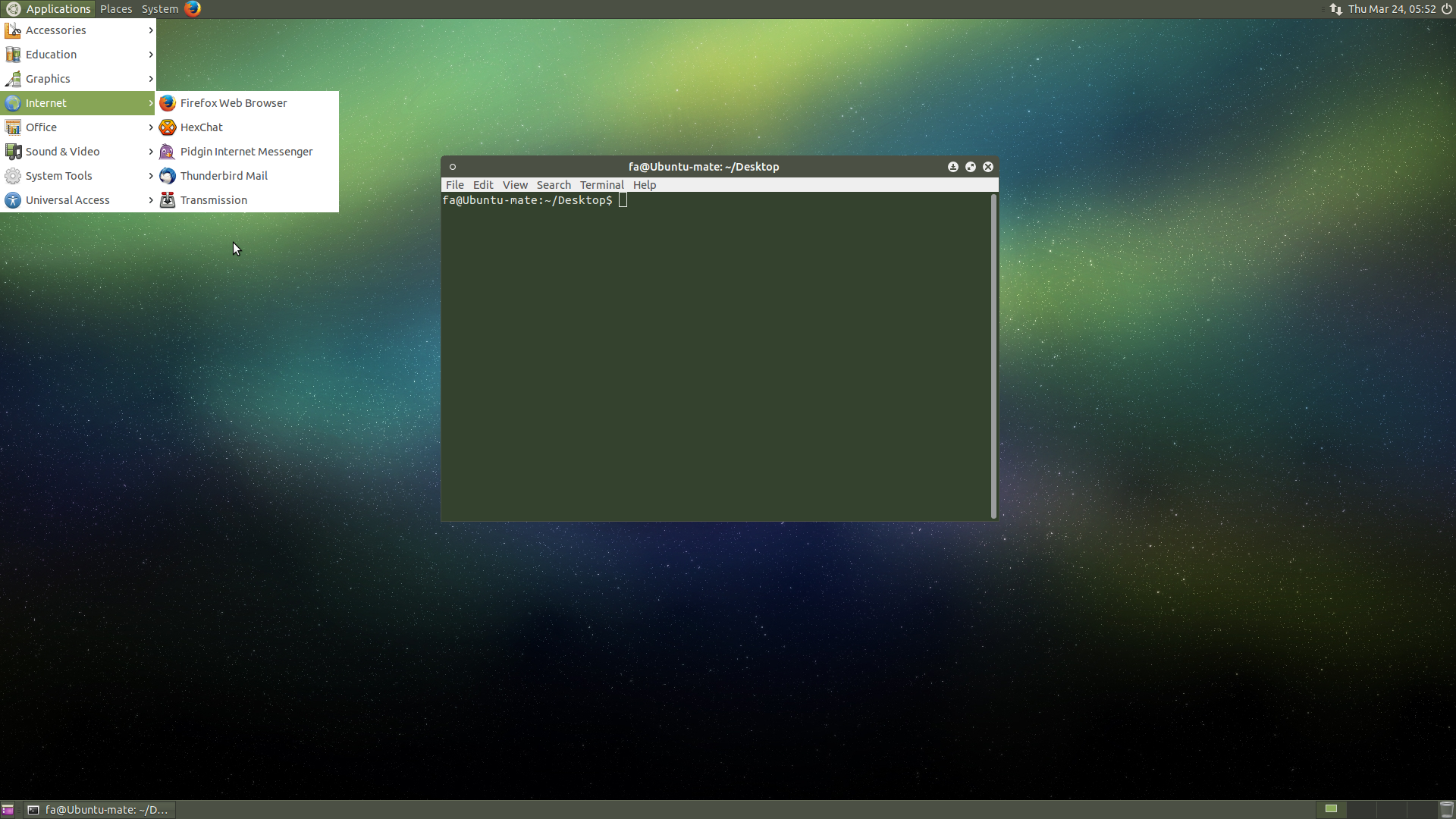NanoPi A64
Contents
1 Introduction
The NanoPi A64 is a new high performance and low cost board designed by FriendlyElec.It uses Allwinner's 64-bit A64 quad-core SoC(ARM Cortex-A53). A UbuntuCore and a UbuntuMATE image files are available from FriendlyElec.
The NanoPi A64 is a small board with comprehensive interfaces, ports and features. It has Ethernet, IR receiver, Video/Audio input and output. It has an onboard AXP803 PMU and WiFi. It is powered by a MicroUSB port. It has MIPI-DSI and DVP interfaces, GPIO pin-header compatible with Raspberry Pi and a serial debug port.
2 Hardware Spec
- CPU: Allwinner A64, 64-bit Quad-core Cortex-A53@648MHz to 1.152GHz, DVFS
- GPU: Mali400MP2, Supports OpenGL ES2.0, OpenVG1.1
- DDR3 RAM: 1GB
- Ethernet: One Gigabit Ethernet (RTL8211E)
- PMU Power Management: AXP803, support software power-off
- Wi-Fi: 802.11b/g/n
- Audio Out/MIC: 3.5mm audio jack
- IR Receiver: Onboard IR receiver
- USB 2.0 Type A x 2
- Serial Debug Port: 2.54mm pitch 4pin-header
- microSD Slot x 1
- microUSB x 1: only for power input
- DVP Camera: 0.5mm pitch 24pin FPC seat
- Video Out: 1.4 HDMI Type-A
- MIPI DSI: 0.5mm pitch 30pin FPC seat
- GPIO: 2.54mm pitch 40pin-header, compatible with Raspberry Pi's GPIO. It includes UART, SPI, I2C, PWM, IO etc
- I2S: 7pin, 2.54mm pitch
- Power Button x 1
- LED: Power Indication x 1, System LED x 1
- PCB : Six layer, ENIG
- Dimension: 64 x 60mm
- Power: DC 5V/2A
- Temperature measuring range: -40℃ to 80℃
- OS: Ubuntu-Core with QtE, Ubuntu-MATE
3 Diagram, Layout and Dimension
3.1 Layout
- GPIO Pin Description
Pin# Name Pin# Name 1 SYS_3.3V 2 VDD_5V 3 GPIOE15/I2C2_SDA 4 VDD_5V 5 GPIOE14/I2C2_SCL 6 GND 7 GPIOD7 8 GPIOH4/UART3-TX 9 GND 10 GPIOH5/UART3-RX 11 GPIOB0/UART2-TX 12 GPIOL10/PWM_S 13 GPIOL8/I2C_S_SCL 14 GND 15 GPIOL9/I2C_S_SDA 16 GPIOH6/UART3-RTS 17 SYS_3.3V 18 GPIOH7/UART3-CTS 19 GPIOC0/SPI0-MOSI 20 GND 21 GPIOC1/SPI0-MISO 22 GPIOB1/UART2-RX 23 GPIOC2/SPI0-CLK 24 GPIOC3/SPI0-CS 25 GND 26 GPIOH8/SPDIF-OUT 27 GPIOH3/I2C1_SDA 28 GPIOH2/I2C1_SCL 29 GOIOH10 30 GND 31 GOIOH11 32 GPIOD4 33 GPIOD5 34 GND 35 GPIOD3/SPI1-MISO 36 GPIOD0/SPI1-CS 37 GPIOD6 38 GPIOD2/SPI1-MOSI 39 GND 40 GPIOD1/SPI1-CLK
- Debug Port(UART0)
Pin# Name 1 GND 2 VDD_5V 3 UART0-TX 4 UART0-RX
- I2S/PCM Pin Description
Pin# Name 1 GND 2 SYS_3.3V 3 GPIOB5/PCM0-BCLK 4 GPIOB4/PCM0-SYNC 5 GPIOB6/PCM0-DOUT 6 GPIOB7/PCM0-DIN 7 GPIOB3/I2S0-MCLK
- DVP Camera IF Pin Description
Pin# Name Description 1, 2 SYS_3.3V 3.3V power output 7,9,13,15,24 GND Ground, 0V 3 CAM_SCL I2C Clock 4 CAM_SDA I2C Data 5 GPIOE17 Regular GPIO, control signals output to camera modules 6 GPIOE16 Regular GPIO, control signals output to camera modules 8 MCLK Clock signals output to camera modules 10 NC Not Connected 11 VSYNC Vertical synchronization to CPU from camera modules 12 HREF/HSYNC HREF/HSYNC signal to CPU from camera modules 14 PCLK PCLK signal to CPU from camera modules 16-23 Data bit7-0 data signals
- MIPI-DSI Pin Description
Pin# Name Description 1, 2, 3 VDD_5V 5V power output 4,7,9,11,14,15,18,21,24,27,30 GND Ground, 0V 5 I2C0_SDA I2C Clock 6 I2C0_SCL I2C Data 8 GPIOL7 Regular GPIO 10 GPIOB2 Regular GPIO 12 GPIOL12 Regular GPIO 13 AP-RESET# System Reset 16 MIPI-DSI-D3N MIPI DSI data, negative differential signal 17 MIPI-DSI-D3P MIPI DSI data, positive differential signal 19 MIPI-DSI-D2N MIPI DSI data, negative differential signal 20 MIPI-DSI-D2P MIPI DSI data, positive differential signal 22 MIPI-DSI-D1N MIPI DSI data, negative differential signal 23 MIPI-DSI-D1P MIPI DSI data, positive differential signal 25 MIPI-DSI-D0N MIPI DSI data, negative differential signal 26 MIPI-DSI-D0P MIPI DSI data, positive differential signal 28 MIPI-DSI-CKN MIPI DSI clock, negative differential signal 29 MIPI-DSI-CKP MIPI DSI clock, positive differential signal
- Note
- SYS_3.3V: 3.3V power output. In our test the real output was 3.1V
- VDD_5V: 5V power input/output. The input range is 4.7V ~ 5.6V. It can take power input from the MicroUSB or the VDD_5V pin from the Debug Port. The VDD_5V is connected to MicroUSB's VBUS
- All pins are 3.3V(In our test the real output was 3.1V), output current is 5mA
- For more details refer to the document schematics
3.2 Dimensional Diagram
- For more details please refer to dimension file in dxf
4 Get Started
4.1 Essentials You Need
Before starting to use your NanoPi A64 get the following items ready
- NanoPi A64
- microSD Card/TFCard: Class 10 or Above, minimum 8GB SDHC
- microUSB power. A 5V/2A power is a must
- HDMI monitor
- USB keyboard and mouse, and a USB HUB would be better
- A Host computer running Ubuntu 16.04 64 bit system
4.2 TF Cards We Tested
To make your NanoPi A64 boot and run fast we highly recommend you use a Class10 8GB SDHC TF card or a better one. The following cards are what we used in all our test cases presented here:
- SanDisk TF 8G Class10 Micro/SD TF card:
- SanDisk TF128G MicroSDXC TF 128G Class10 48MB/S:
- 川宇 8G C10 High Speed class10 micro SD card:
4.3 Make an Installation TF Card
4.3.1 Get Image File
Get the following files from download link to download image files (under the officail-ROMs directory) and the flashing utility(under the tools directory):
Image Files nanopi-a64_friendlycore-xenial_3.10.65_YYYYMMDD.img.zip a Light Ubuntu-core(16.04) system with a Qt Embedded GUI library nanopi-a64-ubuntu-mate-sd4g.img.zip Ubuntu with a MATE-desktop Flash Utility: win32diskimager.rar Windows utility. Under Linux users can use "dd" PhoenixCard_V310.rar Windows utility for flashing Android image. Attention: the "dd" command under Linux doesn't work for flashing Android image HDDLLF.4.40.exe Windows utility for formatting a TF card
4.3.2 Make Ubuntu-Core Image Card
- Extract the nanopi-a64-core-qte-sd4g.img.zip and win32diskimager.rar files. Insert a TF card(at least 8G) into a Windows PC and run the win32diskimager utility as administrator. On the utility's main window select your TF card's drive, the wanted image file and click on "write" to start flashing the TF card.
- After this writing process is done insert this card into your NanoPi A64's TF card slot and power on (with a 5V/2A power source). If the green LED is on and the blue LED is blinking this indicates your NanoPi A64 has successfully booted.
5 Work with Ubuntu-Core
5.1 Run Ubuntu-Core
- Insert a TF card with UbuntuCore image files into your NanoPi A64, connect the board to a 5V/2A power source the board will be automatically powered on. If you can see the blue LED flashing it means your board is working and UbuntuCore is being loaded.
1) To make it easy you can connect an HDMI monitor, a USB mouse and keyboard to your A64 board.
2) If you want to do kernel development you need to use a serial communication board, ie a PSU-ONECOM board, which will allow you to operate the board via a serial terminal.
- Here is a setup where we connect a NanoPi A64 to a PC via the PSU-ONECOM and you can power on your A64 from either the PSU-ONECOM or the board's MicroUSB:
- It has two user names: root and fa and the password for both is "fa".
- Update packages
sudo apt-get update
5.2 Extend TF Card's Section
We strongly recommend you to do this right after you have made an installation TF card since this will greatly enhance your A64's experience
- Extend your card's rootfs section under a host PC:
sudo umount /dev/sdx? sudo parted /dev/sdx unit % resizepart 2 100 unit MB print sudo resize2fs -f /dev/sdx2
Note: you need to replace "/dev/sdx" with the device name in your system.
5.3 Login via SSH
If your NanoPi A64 is connected to a network via Ethernet before it is powered on it will automatically obtain an IP after it is powered up. If it is not connected via Ethernet or its DHCP is not activated obtaining an IP will fail and system will hang on for about 15 to 60 seconds. You can log into the board via SSH. In our test the IP address detected by our router was 192.168.1.230 and we ran the following command to log into the NanoPi NEO:
ssh root@192.168.1.230
The password is fa。
5.4 HDMI Audio Output
Our Ubuntu-Core system's default audio output is the 3.5mm audio jack. You can turn on the HDMI audio by editing the /etc/asound.conf file:
pcm.!default { type hw card 1 device 0 } ctl.!default { type hw card 1 }
card 0 points to the 3.5mm audio jack and card 1 points to the HDMI audio. You need to save your changes and reboot your system to make your changes take effect.
5.5 WiFi Connectivity
Make the following changes in the etc/wpa_supplicant/wpa_supplicant.conf file:
network={ ssid="YOUR-WIFI-ESSID" psk="YOUR-WIFI-PASSWORD" }
Note: the "YOUR-WIFI-ESSID" and "YOUR-WIFI-PASSWORD" need to be replaced with your actual ESSID and password.
Save, exit, reboot your system and run the following commands to turn on the WiFi:
ifdown wlan0 ifup wlan0
If your WiFi password has special characters or you don't want your password saved as plain text you can use "wpa_passphrase" to generate a psk for your WiFi password. Here is how you can do it:
wpa_passphrase YourWiFiESSID
Following the prompt type in your password and you will get a new password in the /etc/wpa_supplicant/wpa_supplicant.conf file. Now you can replace the existing password in the wlan0 file with the new one.
5.6 Check CPU's Working Temperature
You can use the following command to read A64's temperature and frequency
cpu_freq
6 Make Your Own OS(Compile BSP)
6.1 Preparations
Visit download link and go to the sources directory and download nanopi-a64-bsp.
Use the 7-zip utility to extract it and a lichee directory and an Android directory will be generated. Or you can get it from our github:
git clone https://github.com/friendlyarm/a64_lichee.git lichee
Note: "lichee" is the project name named by Allwinner for its CPU's source code which contains the source code of U-boot, Linux kernel and various scripts.
Compilation of the A64's BSP source code must be done under a PC running a 64-bit Linux.The following cases were tested on Ubuntu-14.04 LTS-64bit:
sudo apt-get install gawk git gnupg flex bison gperf build-essential \ zip curl libc6-dev libncurses5-dev:i386 x11proto-core-dev \ libx11-dev:i386 libreadline6-dev:i386 libgl1-mesa-glx:i386 \ libgl1-mesa-dev g++-multilib mingw32 tofrodos \ python-markdown libxml2-utils xsltproc zlib1g-dev:i386
6.2 Install Cross Compiler
Visit this directory's download link toolchain directory and download the gcc-linaro-arm.tar.xz和gcc-linaro-aarch64.tar.xz package
The gcc-linaro-arm.tar.xz is the compiler for U-boot and gcc-linaro-aarch64.tar.xz is for A64's Linux kernel. Copy its source code to the nanopi-a64-bsp/brandy/toolchain/ directory.
When you compile A64's U-boot and Linux kernel these two compilers will be automatically extracted and launched.
6.3 Compile U-boot
U-boot's source code is under the "lichee/brandy/u-boot-2014.07" directory and there is a "build.sh" script under the "brandy" directory, which is used to compile U-boot:
cd lichee/brandy ./build.sh -p sun50iw1p1
Note: the "lichee" directory contains a cross-compiler which will be automatically run when you compile U-boot with "build.sh".
6.4 Compile Linux Kernel
The Linux kernel's source code is under the "lichee/linux-3.10" directory. There is a "build.sh" file under the "lichee" directory", which is used to compile the kernel:
cd lichee echo -e "0\n2\n0\n1\n" | ./build.sh config && ./build.sh
After the compilation is done a uImage and its kernel modules will be generated under "linux-3.10/output".
6.5 Package System Modules
cd lichee ./build.sh pack
This command copies the generated executables including u-boot and Linux kernel and configuration files to the "lichee/tools/pack/out/" directory.
Note: you will not get a workable U-boot if you don't do this.
6.6 Update U-boot on TF Card
Run the following commands to update the U-boot on your TF card:
cd fa_tools ./fuse_uboot.sh /dev/sdx
you need to replace "/dev/sdx" with the device name in your system.
The boot.img file and kernel modules are all under the "linux-3.10/output" directory. You can update the kernel on your TF card just by copying the boot.img file to your TF card's boot section.
6.7 Clean Source Code
./build.sh -p sun50iw1p1 -k linux-3.10 -b nanopi_a64 -m clean
7 More OS Support
7.1 Ubuntu-MATE
Ubuntu-Mate is a Ubuntu variant and its GUI is Mate-desktop.
FriendlyElec doesn't provide technical support for it
- Go to this link download link to download the image file nanopi-a64-ubuntu-mate-sd4g.img.zip
- Extract it and flash the image file to a TF card with win32diskimager under Windows
- After it is done you can boot your NanoPi A64 with this card
- Login name: "root" or "fa", Password: fa
8 Resources
- Schematics NanoPi-A64-1610-Schematic.pdf
- Dimensional diagram in dxf
- A64 datasheet
9 Update Log
9.1 Dec-24-2016
- Released English Version
9.2 Dec-29-2016
- Added section 6.2
